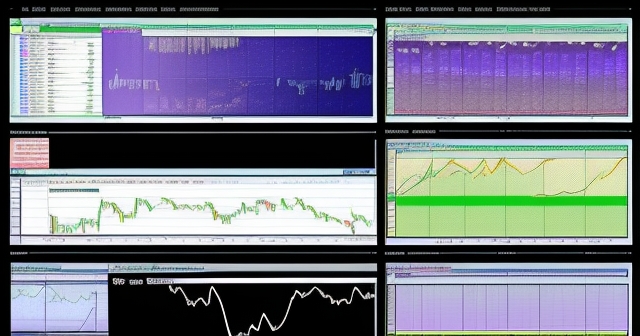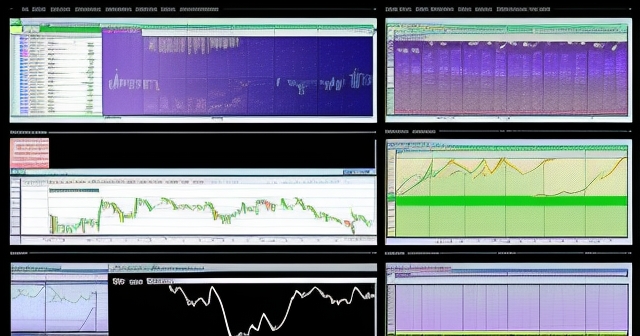
USD JPY Forex: Understanding the Dynamics of Currency Movements
Table of Contents
ToggleUnderstanding the Dynamics of USD/JPY: Monetary Policy, Data, and Safe Havens
Welcome, traders, to a deep dive into one of the most closely watched currency pairs in the global foreign exchange market: USD/JPY. This pair, representing the exchange rate between the United States Dollar and the Japanese Yen, is a fascinating study in economic divergence, central bank intentions, and the intricate dance between risk-on and risk-off market sentiment. If you’re new to forex or seeking to deepen your understanding of technical analysis drivers, understanding the forces acting on USD/JPY can provide invaluable insights into the broader market landscape.
- The USD/JPY pair is influenced by the policies of the Federal Reserve and the Bank of Japan.
- Exchange rates fluctuate based on economic data releases and central bank decisions.
- Traders should remain alert to global events that can impact market sentiment.
Think of the USD/JPY pair as a delicate scale, constantly balancing the relative strengths and weaknesses of two major global economies and their respective central banks. On one side, we have the Federal Reserve (Fed) in the United States, a heavyweight entity grappling with inflation and employment. On the other, the Bank of Japan (BoJ), which has long pursued ultra-loose monetary policies but is now navigating the complex path towards normalization after decades of deflationary pressures. What happens when these two powerful forces begin to move in different directions? That’s precisely what we’re witnessing, and it creates both opportunity and significant volatility.

The Core Conflict: Divergent Monetary Policies
At the heart of USD/JPY’s recent movements lies a significant monetary policy divergence between the Fed and the BoJ. For months, perhaps even years, the narrative was clear: the Fed was aggressively hiking rates to combat inflation, while the BoJ was committed to keeping rates near zero, or even negative, to stimulate its economy and fight deflation. This wide gap in interest rates made the USD attractive relative to the JPY, as investors could earn higher yields on dollar-denominated assets. This interest rate differential was a primary driver pushing USD/JPY higher, reaching multi-decade peaks.
However, the script is flipping. The market is now anticipating that the Fed has finished its hiking cycle and is moving towards cutting interest rates, possibly starting later this year – with the consensus often pointing towards September and December. Why? Because recent economic data suggests that the Fed’s aggressive tightening has begun to cool the US economy and, crucially, temper inflation. Simultaneously, the Bank of Japan is seeing persistent, albeit modest, inflationary pressures finally take hold. This is leading markets to price in the potential for the BoJ to *hike* interest rates, albeit gradually.
Consider this analogy: Imagine the Fed is a pilot slowing down a speeding airplane (the US economy) to land smoothly, while the BoJ is a pilot gently accelerating a plane that’s been taxiing slowly for a long time (the Japanese economy). When one pilot applies the brakes and the other adds thrust, the relative speed between them changes dramatically. In currencies, this relative shift in monetary policy expectations is a powerful force that can drive significant price swings. The expectation of Fed rate cuts weakens the USD, while the expectation of BoJ rate hikes strengthens the JPY. Both scenarios put downward pressure on the USD/JPY pair.
This divergence is not just theoretical; it’s priced into markets daily. Traders are constantly adjusting their expectations based on central bankers’ speeches, economic reports, and global events, trying to predict the exact timing and magnitude of these policy shifts. Your ability to understand and react to this dynamic is crucial for navigating the USD/JPY pair.
Decoding US Economic Data: Fueling Fed Bets
The path of the Federal Reserve’s monetary policy is heavily dependent on economic data, particularly concerning inflation and the labor market. As traders focusing on USD/JPY, we must become expert data watchers, understanding what each key release signifies and how it might influence the Fed’s thinking and, consequently, the value of the US dollar.
| Data Release | Importance |
|---|---|
| Personal Consumption Expenditure (PCE) | Crucial for inflation measures. |
| Job Openings and Labor Turnover Survey (JOLTS) | Indicator of labor market health. |
| Nonfarm Payrolls (NFP) | Reflects overall job growth. |
One of the most critical pieces of data is the **Personal Consumption Expenditure (PCE) Price Index**, especially the **Core PCE**, which excludes volatile food and energy prices. This is the Fed’s preferred measure of inflation. Recent reports showing cooling PCE inflation, both headline and core, have significantly reinforced market expectations for Fed rate cuts later this year. If inflation is indeed coming down towards the Fed’s 2% target, the urgency for high interest rates diminishes.
Another cornerstone is the labor market. The Fed has a dual mandate: price stability and maximum employment. Therefore, indicators of labor market health are paramount. The **Job Openings and Labor Turnover Survey (JOLTS)** provides insight into labor demand. A decline in job openings suggests the labor market might be cooling, reducing wage pressure and potentially inflation, thus supporting the case for Fed easing. Conversely, a solid JOLTS report, like a recent rebound, can temper immediate rate cut expectations, offering temporary support to the USD.
Perhaps the most anticipated monthly release is the **Nonfarm Payrolls (NFP) report**, alongside the Unemployment Rate and Average Hourly Earnings (wage growth). Strong NFP figures and rising wages signal a robust labor market, which can be inflationary, potentially leading the Fed to keep rates higher for longer. Weak NFP data and slowing wage growth suggest a weakening economy, making rate cuts more likely. The NFP report often causes significant volatility in USD pairs, including USD/JPY, immediately upon release.
| Data Point | Market Impact |
|---|---|
| ISM Manufacturing PMI | Indicates economic activity. |
| ISM Services PMI | Reflects service sector strength. |
Other data points like the **ISM Manufacturing and Services PMIs** (Purchasing Managers’ Indexes) offer a pulse on economic activity in key sectors. Readings below 50 indicate contraction, while those above 50 indicate expansion. Weak PMI data points towards slowing growth, which can also increase the likelihood of rate cuts. By tracking these data releases, you gain a window into the information the Fed is using to make its policy decisions.
The Yen as a Safe Haven Amid Geopolitical Winds
Beyond economic fundamentals and monetary policy, the Japanese Yen holds a unique status in the financial world: it is widely considered a safe-haven currency. This means that during times of global uncertainty, heightened geopolitical tension, or financial market stress, investors tend to buy the Yen, seeking its relative safety compared to riskier assets. This demand for safety provides an underlying source of strength for the JPY, especially against currencies like the USD, which is often seen as more sensitive to global economic cycles and risk sentiment.

We live in a world frequently marked by geopolitical friction. Ongoing conflicts, trade disputes, and political instability can significantly impact market psychology. The data analysis highlights several factors contributing to this safe-haven demand for the Yen: the war in Ukraine, the conflict in Israel/Gaza, and tensions involving Iran. These events create uncertainty about global growth, energy prices, and political stability, prompting investors to move capital into perceived safer assets like government bonds and specific currencies, with the JPY being a prime example.
Furthermore, trade-related uncertainties, such as potential changes in US trade policy (like new tariffs or trade talks with countries like Japan and China), can also fuel risk aversion. If the global trade environment becomes more unpredictable or contentious, it can dampen investor confidence and boost demand for safe havens. Former President Donald Trump’s rhetoric on trade, for instance, can quickly introduce uncertainty into the market, impacting currencies like the JPY.
How does this affect USD/JPY? When safe-haven demand for the JPY increases, the Yen strengthens. If this occurs while the USD is simultaneously weakening due to expectations of Fed rate cuts or other domestic issues, the downward pressure on USD/JPY can intensify. It’s like having two forces pushing the pair lower at the same time. However, if global tensions ease, or risk sentiment improves, safe-haven demand for the JPY may wane, allowing the pair to rebound, especially if the USD finds temporary support from better-than-expected data or less dovish Fed commentary.
Japanese Inflation and the BoJ’s Shifting Stance
While the Fed has been battling high inflation, Japan has historically faced the opposite problem: deflation or very low inflation. For years, the Bank of Japan maintained ultra-loose monetary policy, including negative interest rates and massive asset purchases, trying desperately to generate sustained inflation and economic growth. However, recent global price increases, supply chain issues, and a weaker Yen (making imports more expensive) have finally started to push Japanese inflation higher.

The **Tokyo Consumer Price Index (CPI)** is an important indicator that provides a preview of nationwide inflation trends. Recent Tokyo CPI data exceeding the BoJ’s 2% target has been a key factor increasing expectations for a shift in BoJ policy. While one-off factors can influence headline CPI, the persistence of core measures above 2% signals that inflationary pressures might be becoming more entrenched.
This shift in the inflation landscape is putting pressure on the Bank of Japan to move away from its decades-long easy money stance. BoJ Governor Kazuo Ueda’s statements are closely scrutinized for any hint of policy change. Recent remarks reaffirming a willingness to consider increasing interest rates if underlying inflation accelerates have further fueled market speculation about potential BoJ rate hikes. While these hikes are expected to be gradual and cautious, even a small move higher from negative or near-zero rates would represent a significant policy pivot after so many years.
For USD/JPY, the prospect of BoJ rate hikes provides support for the Japanese Yen. Just as expectations of Fed *cuts* weaken the USD, expectations of BoJ *hikes* strengthen the JPY. This is the other half of the monetary policy divergence story that is weighing on the pair. Traders are watching Japanese economic data and BoJ commentary intently, looking for confirmation that the path towards tighter policy is indeed materializing.
Weaving it Together: The Interplay of Drivers
Understanding USD/JPY isn’t about focusing on just one factor; it’s about appreciating how multiple powerful drivers interact. We have the fundamental economic backdrop of both the US and Japan, the explicit monetary policy intentions of their central banks influenced by data, and the overarching impact of global risk sentiment driven by geopolitical and trade factors.
Think of it like a complex engine with several key components that need to work together, but sometimes they misfire or work against each other. For instance, you might have a strong US NFP report (positive for USD, pushes USD/JPY up) released on the same day as a flare-up in geopolitical tensions (negative for USD, boosts JPY safe-haven demand, pushes USD/JPY down). The resulting price action can be volatile and challenging to predict definitively.
The market is constantly recalibrating the relative importance of these drivers. At times, monetary policy expectations dominate. At other times, a sudden geopolitical shock can override economic data. Staying informed across all these areas is essential for developing a robust trading view on USD/JPY. This requires not just looking at historical data but also understanding the forward-looking expectations priced into the market – what economists and traders believe the Fed and BoJ will do next.
Furthermore, consider the potential for ‘jawboning’ – verbal interventions by policymakers or government officials that aim to influence the currency’s value without direct action. For example, Japanese officials might express concern about excessive Yen weakness, or US officials might comment on the economic outlook in a way that subtly shifts expectations. These comments, while not direct policy changes, can still trigger short-term price movements in USD/JPY.
Technical Levels to Watch: Charting the Path
While fundamentals provide the ‘why’ behind currency movements, technical analysis helps us identify potential ‘where’ and ‘when’. By studying price charts, patterns, and indicators, traders attempt to find high-probability entry and exit points. For the USD/JPY pair, like any currency, specific technical levels often act as magnets or barriers to price movement.

The recent price action of USD/JPY reflects the battle between the forces we’ve discussed. The pair initially fell due to strong USD weakness drivers (like cooling US inflation and weaker PMIs) but then showed a rebound. This rebound was partly attributed to some tempering of immediate dovish bets on the Fed, perhaps influenced by a solid JOLTS report or comments from less dovish Fed officials like Atlanta Fed President Bostic, who has suggested there’s no rush to cut rates.
Currently trading around the 143.00 level, technical analysts are keenly watching key support and resistance areas. A significant support level has been identified around **142.00**. What does ‘support’ mean? It’s a price level where historical buying interest has been strong enough to halt or reverse a decline. If the price reaches 142.00, traders will be watching closely to see if buyers step in again. A failure to hold above 142.00 could signal further downside potential, perhaps targeting lower levels based on Fibonacci retracement or other technical tools.
| Price Level | Market Behavior |
|---|---|
| 142.00 (Support) | Potential buying interest and reversal point. |
| 143.00 (Resistance) | Potential selling interest; bullish breakout needed for further gains. |
On the upside, current levels around 143.00 and potentially higher points serve as resistance. Resistance is the opposite of support – a price level where historical selling interest has been strong enough to halt or reverse an advance. Breaking above key resistance levels suggests that the bulls might be gaining control, potentially opening the door for a move towards higher targets. Traders often use tools like moving averages (e.g., Simple Moving Average or SMA) or Fibonacci retracement levels from recent swings to identify potential support and resistance zones.
Technical analysis isn’t a crystal ball, but it provides a framework for making trading decisions based on price behavior. Combining an understanding of the fundamental drivers (like monetary policy and data) with the visual insights from technical charts can offer a powerful approach to trading pairs like USD/JPY. Are the fundamentals suggesting further downside, and is the price approaching a key support level where that fundamental view might be tested by technical buying? These are the kinds of questions technical analysis helps you explore.
Navigating the Future: What to Watch Next
Predicting the exact future path of USD/JPY is impossible, but we can identify the key signposts that are likely to influence its direction. As we’ve seen, this pair is driven by a complex interplay of economic fundamentals, central bank actions, and global sentiment. Therefore, staying informed on several fronts is crucial.
- Monitor upcoming economic data releases that may influence trader sentiment.
- Pay close attention to speeches and announcements from central bank officials.
- Stay aware of geopolitical developments that could affect risk appetite.
Our primary focus must remain on the United States economic calendar. Upcoming releases like the **ISM Manufacturing PMI** and, most significantly, the **Nonfarm Payrolls (NFP) report** will be market movers. Strong data could temper Fed rate cut expectations and provide temporary support for the USD, potentially leading to a rebound in USD/JPY. Weak data would likely reinforce the dovish Fed narrative, weighing further on the pair.
Comments from Federal Reserve officials, including Chairman Jerome Powell, are also paramount. Any subtle shifts in tone regarding the economic outlook or the timing of potential rate adjustments will be closely watched. Similarly, statements from Bank of Japan officials, particularly Governor Ueda, on the inflation outlook and the possibility of policy adjustments will be critical for the JPY side of the equation.
Beyond monetary policy, keep an eye on global geopolitical developments. Any escalation or de-escalation of conflicts or trade tensions could quickly shift safe-haven demand for the Yen. Pay attention to news related to US-China trade relations or any potential US tariff announcements, as these can quickly alter market risk sentiment.
Finally, continue to monitor the technical levels we discussed, particularly the support at 142.00 and key resistance levels above the current trading range. Price action around these levels, especially when coinciding with major data releases or news events, can often signal the next potential move for the pair. A decisive break below 142.00, particularly on weak US data or increased safe-haven flows, would suggest that bearish momentum is increasing.
Considering Trading the USD/JPY Pair
The USD/JPY pair is known for its volatility, offering both significant potential for profit and considerable risk. Its sensitivity to major economic releases and central bank pronouncements means that price swings can be swift and substantial. For traders considering engaging with this pair, a solid understanding of both its fundamental drivers and technical landscape is indispensable. Developing a trading plan that incorporates risk management strategies tailored to high-volatility pairs is crucial.
If you’re looking to begin trading forex or explore CFDs based on currency pairs like USD/JPY, choosing the right platform is a critical step. A good broker provides reliable execution, access to necessary trading tools, and resources to support your learning journey. Understanding the different types of accounts, leverage options, and fee structures offered is part of making an informed decision about where to trade.

If you’re considering starting your journey into forex trading or exploring a wide range of CFD instruments beyond just currency pairs, then Moneta Markets is a platform worth considering. Originating from Australia, it offers over 1000 financial instruments, catering to both beginners and experienced traders alike.
Building Your Expertise: The Trader’s Journey
Navigating the complexities of the USD/JPY pair, or indeed any financial market, is an ongoing process of learning and adaptation. The forces that influence currency movements are dynamic, constantly evolving with new data, policy shifts, and global events. As a trader, your goal is not necessarily to predict the future with perfect accuracy, but rather to understand the underlying drivers, identify potential opportunities, and manage risk effectively.
We’ve explored the core elements influencing USD/JPY: the powerful dynamic of monetary policy divergence between the Fed and the BoJ, the critical role of US and Japanese economic data in shaping central bank expectations, the impact of global risk sentiment boosting the Yen’s safe-haven appeal, and the technical levels that provide guideposts on the price chart. Integrating these perspectives provides a holistic view necessary for informed trading decisions.
Developing your expertise involves continuous research, studying charts, practicing with trading platforms, and most importantly, learning from both your successes and failures. Don’t be afraid to delve into the details of economic reports or the nuances of central bank language. The deeper your understanding, the better equipped you will be to interpret market signals and react effectively. Remember, trading is a skill that is honed over time through dedicated practice and persistent learning.
When choosing a trading platform, the flexibility and technological advantages offered by Moneta Markets are noteworthy. It supports popular platforms such as MT4, MT5, and Pro Trader, combining high-speed execution with competitive spread settings to provide a favourable trading environment.
As you continue your trading journey, remember the principles of risk management. Volatility in pairs like USD/JPY can lead to rapid gains or losses. Always trade with capital you can afford to lose, utilize tools like stop-loss orders, and size your positions appropriately based on your account size and risk tolerance. Informed trading is not just about finding winning trades, but also about protecting your capital from significant drawdowns.
The Significance of Regulation and Support
For those serious about long-term engagement in the forex and CFD markets, the choice of broker is not just about platforms and instruments; it’s also about trust, security, and support. Trading involves depositing funds and executing transactions, making the regulatory standing of your broker paramount. Knowing that your broker is supervised by reputable financial authorities provides a layer of protection and ensures adherence to industry standards.

If you are seeking a forex broker with regulatory oversight and the capability for global trading, Moneta Markets holds multiple international regulatory licenses from entities like FSCA, ASIC, and FSA. They also offer comprehensive support, including segregated client funds, free VPS, and 24/7 customer service, making them a preferred choice for many traders.
In conclusion, the USD/JPY pair offers a compelling case study in how global economic forces and central bank policies translate into currency movements. By focusing on the monetary policy divergence, understanding the impact of key economic data, recognizing the role of safe-haven flows, and utilizing technical analysis, you can build a more informed perspective on this dynamic pair. Continuous learning and robust risk management are your allies in navigating the opportunities and challenges presented by USD/JPY.
usd jpy forexFAQ
Q:What factors influence the USD/JPY exchange rate?
A:Factors include monetary policy divergence, economic data releases, and global risk sentiment.
Q:How does the Federal Reserve’s policy affect USD/JPY?
A:The Fed’s interest rate decisions directly impact the strength of the USD against the JPY.
Q:What is the significance of safe-haven demand for the Yen?
A:During times of uncertainty, investors flock to the JPY, boosting its value against other currencies like the USD.
You may also like
Calendar
| 一 | 二 | 三 | 四 | 五 | 六 | 日 |
|---|---|---|---|---|---|---|
| 1 | 2 | 3 | 4 | 5 | 6 | 7 |
| 8 | 9 | 10 | 11 | 12 | 13 | 14 |
| 15 | 16 | 17 | 18 | 19 | 20 | 21 |
| 22 | 23 | 24 | 25 | 26 | 27 | 28 |
| 29 | 30 | 31 | ||||
發佈留言
很抱歉,必須登入網站才能發佈留言。